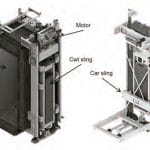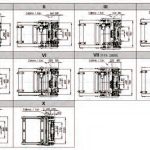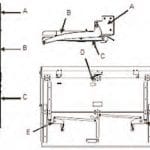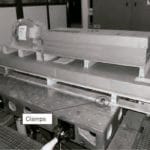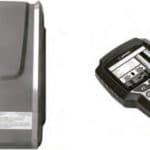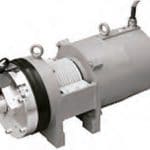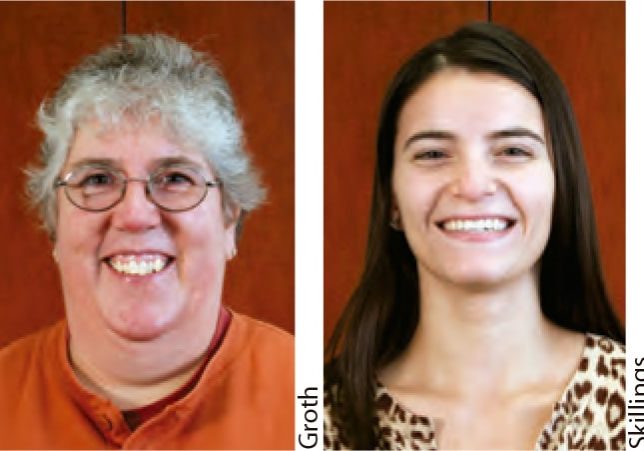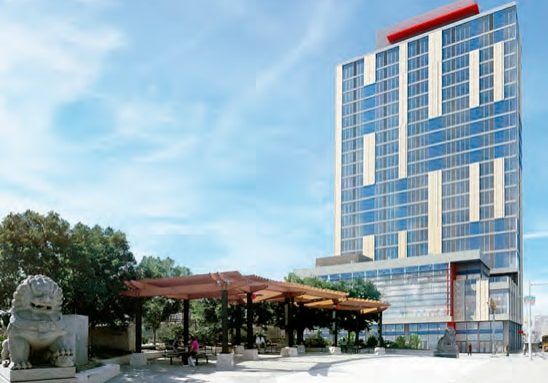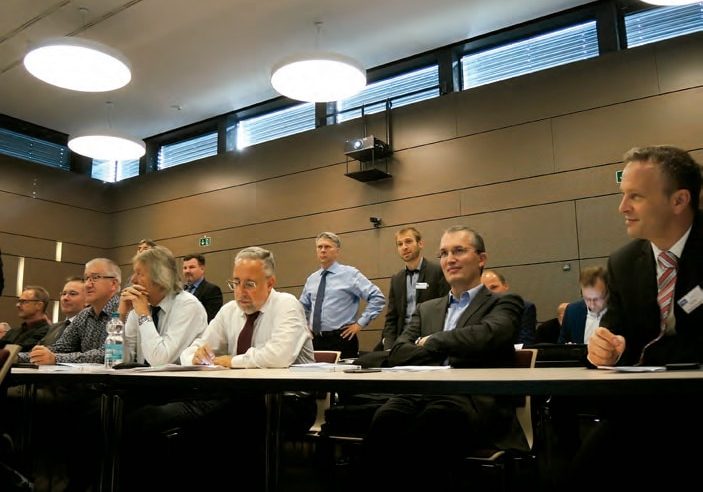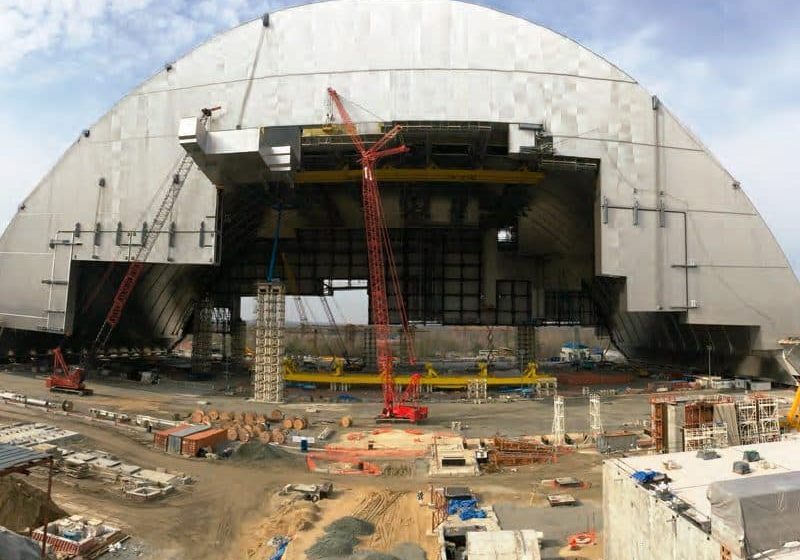MRM W Line, Elevator for Modernization Business in Compliance with EN 81-21
Jan 1, 2017
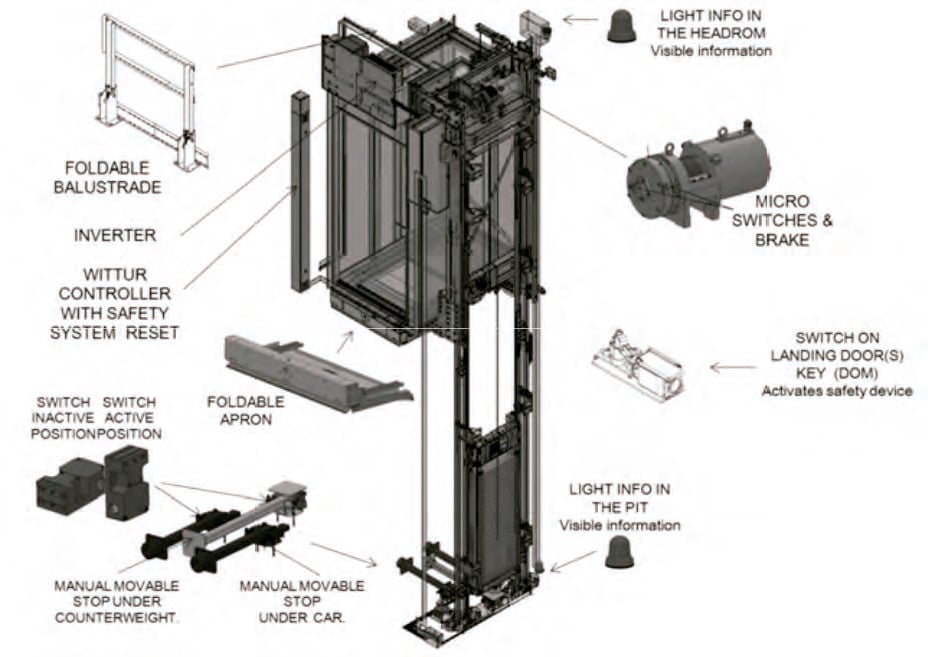
A new Wittur product seeks to serve as an ideal solution for modernization projects.
This paper was presented at  Madrid 2016, the International Congress on Vertical Transportation Technologies, and first published in IAEE book Elevator Technology 21, edited by A. Lustig. It is a reprint with permission from the International Association of Elevator Engineers
Madrid 2016, the International Congress on Vertical Transportation Technologies, and first published in IAEE book Elevator Technology 21, edited by A. Lustig. It is a reprint with permission from the International Association of Elevator Engineers  (website: www.elevcon.com).
(website: www.elevcon.com).
The starting point of each development project is the analysis of trends, innovation and requirements coming from markets, norms, regulations and technology as part of the strategic product-planning process. Years ago, the results of this process indicated the increasing age of the world’s elevator passengers, as well as the increasing number of elevators in existing buildings due for replacement. We also noticed amendments in safety norms (EN 81-21) to protect installers, service technicians, Notified Bodies and end users of machine-room-less (MRL) elevators. This norm, EN 81-21, let us achieve completely safe elevators with very small pits and headrooms.
These trends and requirements were the main drivers for the development of the MRM W Line, our MRL elevator for the modernization business.
The MRM W Line, designed following the principles of modularity and scalability, consist in a full range from 320-kg to 1050-kg rated load, 1-mps rated speed and 30-m travel height.
Existing Elevator Stock and Modernization
The global installed elevator base stood at 14.3 million units in 2014. Western Europe accounted for one-third of this total, reflecting the region’s high level of economic development and urbanization and the popularity of high-rise residential buildings in many countries in the region (especially in Italy and Spain). However, in contrast to the historical period, the Asia/Pacific region now owns the largest share of the global elevator stock, with 5.6 million units in operation, or two-fifths of the global total. This is mostly due to rapid growth in demand over the past decade in China, which, in 2014, was home to 3.5 million elevators — one-quarter of the global total and more than triple the number of elevators than in all of North America. In the U.S., high-rise residential buildings are not as common as in many other developed elevator markets, and the number of elevators per thousand urban residents is a fraction of the corresponding Western European level.
In 2019, the global elevator stock is expected to reach 18 million units on 4.8% annual growth. The Asia/Pacific and Africa/Middle East regions can expect the strongest advances by far in the size of their elevator stock from low base levels, supported by rising standards of living and urbanization rates, which will support the construction of tall buildings in many developing elevator markets. The remaining regions, which typically have mature elevator markets with large established stocks of existing units, can expect much slower growth through the forecasted period. In general, the intensity of new building construction in urban areas in these regions is much lower due to stable urbanization rates.
As in the case of elevator systems themselves, the provision of related repair and maintenance services has benefited significantly in recent years from the application of advanced technology that can improve the operation of elevators. In addition, there is considerable potential for business activity on the modernization side of the market, including retrofitting existing systems to be compatible with new building codes. For example, in 2003, the European Union adopted a new set of European Committee for Standardization (CEN) elevator standards, referred to as the Safety Norm for Existing Lifts, which called for upgrades of old units. These codes bolstered the modernization and repair service market in Eastern and Western Europe, particularly during the early 2000s, as many countries outlined individual schedules for modernization, beginning with the oldest units. While the more intensive elevator repair work has already been completed in most countries, these safety codes will continue to support elevator modernization and repair services spending through the forecasted period in countries that follow the CEN elevator standards or draw from them to write their own elevator maintenance and modernization codes.
Wittur Technology Inside
The main trends of the modernization business were the pillars in this development — pillars based on weight reduction, energy efficiency, minimum pit and headroom and a maximum optimization of the well. To live up to these pillars, several new components have been developed.
The MRM W Line, based on an L-Frame car sling with a counterweight integrated on the rail guides, roping 1:1 or 2:1, 1-0º/90º/180º access, 2,600-mm headroom, 350-mm pit room and with a motor with reduced dimensions designed to achieve the maximum performances in the minimum well space (Figure 1).
The design of this elevator requires a special focus on the dynamic behavior of the complete system to ensure high ride quality by reducing vibrations and associated vibro-acoustic noise and damages in the installation due to a high level of dynamic stresses.
The R&D team responsible for designing this elevator using specific engineering tools for static, dynamic and mechatronic simulation has been able to achieve compact components with very good results. The mechatronic simulation tool allowed the engineers to analyze the total elevator in advance and anticipate possible failures. Wittur also has its own management-development project based on different activities, quality gates, deliverables and all processes (R&D, industrial engineering, quality, controlling, etc.) to ensure a safe and reliable product on the market.
Patent research was a very important topic in product development for the MRM W Line. In collaboration with our corporate patent and trademark, all the patents in the market were analyzed in detail to be sure it would not infringe on any competitor’s patent. Analyzing these patents helped the R&D team in the design of this elevator. The machine-frame fixation to the guides and alignment of diverter pulleys, for instance, was the result of that research. The MRM W Line also has its own patents in different components, while keeping a free-market product patent.
Optimization and compact designs are current trends in the elevator business. Mainly for modernization purposes, the space in the car is a must. Old buildings that currently don’t have an elevator will need big cars to move disabled and handicapped people; so, accessibility also has to be considered, and the EN 81-70 (accessibility to lifts for persons including persons with disabilities) has been taken into consideration for that purpose.
The MRM W Line is a flexible and compact product with several standard configurations (Figure 2) that can be installed in very small wells or replace current elevators, increasing its capacity, in some cases, by up to two people. The MRM W Line can optimize the well-space by up to 60% (space occupied by the car).
Another basic pillar in Wittur is safety. “Safety in motion” is our driving force with each new design. EN 81-21: New Passenger and Goods Passenger Lifts in Existing Buildings fixes the rules on safe products when the elevator is installed in existing buildings with a reduced pit and/or headroom. In Figure 3, we can see the schema of components involved in fulfilling the complete EN 81-21.
This set of components can be combined according to building requirements:
- Foldable balustrade
- Foldable car apron
- Safety system reset in controller
- Movable stop with buffer for reduced pit
- Movable stop with buffer for reduced headroom
- Brake and landing-door switches
- Light information in pit and/or headroom
This set has been tested and certified with the Type-Examination Certificate, in combination with our controller, to guarantee a safe and reliable operation for installers and maintainers. Of all the components in compliance with EN 81-21 that are involved in that set, the foldable apron (Figure 4) is one of the most important components. This foldable apron has been designed and patented by Wittur.
This component has been designed according to EN 81-21 5.8.2 a), EN 81-20, under the Lift Directive 95/16/EC and 2014/33/EU and according to the Machinery Directive 2006/42/EC. It has two working positions: folded, during normal use of the lift, and unfolded, used in maintenance and rescue operations. Figure 5 shows it is composed of a fixed part (A), which is joined to the sill support, and two foldable sheets (B and C). The two foldable sheets are articulated. There are two blocking systems; one of them is for the folded position (D), and the other is for the unfolded one (E). This foldable apron lets us achieve very small pits and maximum safety in case of passenger rescue.
A modular logistic concept was also taken into consideration. This concept, which is based on modular packages, commitment to the environment and following the logic sequence of the elevator-installation process, allows installers to quickly identify where the next module to install is and what material is inside. This way, optimization in the installation process is reduced.
These modules have been tested in a laboratory (Figure 6) under simulations of extreme transportation conditions to ensure the quality of the components (Figure 6).
Comfort is another value added to this elevator. New isolation material below the car and motor has been designed, resulting in values of vibrations and noise in the car similar to those of elevators with a standard car sling with central rail guides (not L-frame).
New technologies, based on innovative suspension means, monitoring and diagnosis, new materials and improvement in accessibility are being analyzed by our department, Advance R&D, to be incorporated into the MRM W Line in the next steps.
Wittur Components Integration
MRM W Line integrates the most innovative Wittur components:
- Augusta EVO car door: New energy-efficiency car door with reduced dimensions, low weight and two motor locations to be installed in buildings with reduced headrooms
- Augusta EVO landing door: New commodity door with reduced mechanism dimensions to be adapted to existing wells and with an easy and quick installation process
- MCS1: Wittur Modular Car System based on a global platform to cover all ranges: adapted to the L-frame car sling, this car can be installed from inside the cabin with only one person, thanks to its weight-reduction and modular-assembly concept.
- Electric Safety Gear (ESG): This innovative concept is an electric safety gear released electrically with compact dimensions. It has enabled us to remove several components — such as the overspeed governor, tension pulley, rope loop and well-end switches — thereby increasing the space in the well, reducing complexity and reducing installation time. It is also integrated with our Wittur controller E-Pack. Currently, Wittur is working on the certification of the integration of new functionalities in compliance with the existing EN 81-21. This new functionality will allow us to remove the current movable stops for reduced pit and headroom.
- E-Pack: As Wittur’s standard controller, the E-pack consists of a frequency inverter with an integrated lift controller and different interfaces to connect all necessary peripheral equipment such as the car-operating panel, landing-operating panel, etc. The E-Pack has been designed completely plug-and-play, and can be provided with a single or double cabinet, depending on the customer’s application. Its protocol communication is CANbus, and it includes functionalities such as direct landing or sleep mode as standard. The MRM W Line, in combination with the E-Pack, has obtained category A, according to VDI-4707 and ISO-25745. The E-Pack also has a very friendly handset with all functionalities inside to be able to easily and quickly control all parameters of the elevator (Figure 7).
- WSG-T0: The WSG-T0 is a very compact synchronous gearless machine designed according to MRM W Line requirements. These requirements were based on space, weight and traction-pulley reduction to achieve modernization wells and easy installation. The traction-pulley position, between the motor and the brake, allows the gearless machine to be localized between the car and counterweight rail guides, optimizing the well space (Figure 8).
Conclusion: MRM W Line, the Best Solution for Modernizations
The modernization business is growing every year due to the increase in elevator stocks worldwide, so, it means that compact, safe and reliable solutions will be demanded in the coming years. Elevators, in compliance with EN 81-21, will keep the safety principles, for modernization purposes, for the end users, installers and maintainers.
The MRM W Line platform, with a complete range of 320-1050 kg, has been designed to fulfill those modernization demands. This completely reliable design has been tested and certified to ensure correct operation. Its modular concept, several configurations and integration with the best Wittur products make the MRM W Line the best solution for the modernization business.
- Figure 1: MRM W Line
- Figure 2: Standard configurations in the MRM W Line
- Figure 3: Schema of EN 81-21 in the MRM W Line
- Figure 4: Wittur foldable apron
- Figure 5: Foldable apron
- Figure 6: Modules tested in the multiaxial shaker table
- Figure 7: Integrated control unit E-Pack and handset
- Figure 8: WSG-T0 synchronous motor
References
[1] The Freedonia Group, Inc. (2015). Elevator Modernization & Repair.
[2] The Freedonia Group, Inc. (2015). Existing Elevator Stock.
[3] The Freedonia Group, Inc. (2015). WORLD ELEVATOR MODERNIZATION & REPAIR SERVICES DEMAND BY REGION (million dollars) 2004 – 2024.
[4] Dr.-Ing. E. Nitidem (2014). Modelling and simulation of the dynamic behaviour of lift systems with cantilever car slings.
[5] Alberto Soriano (2014). Planning Manual of MRM W Line.
Get more of Elevator World. Sign up for our free e-newsletter.
